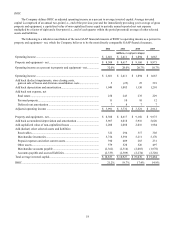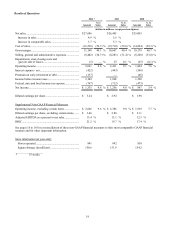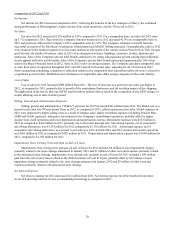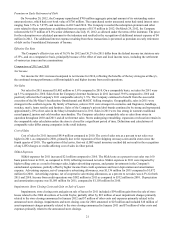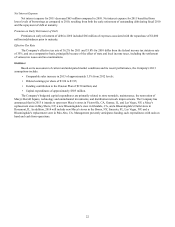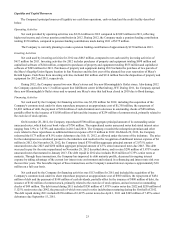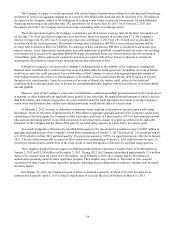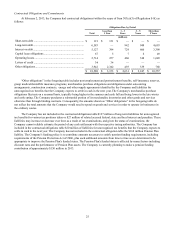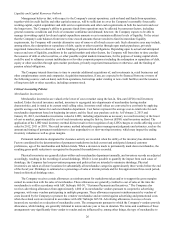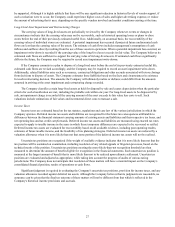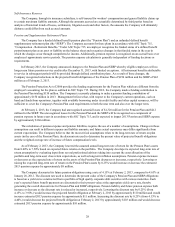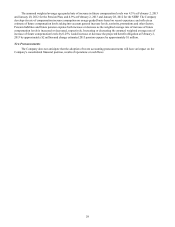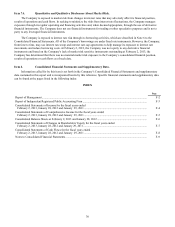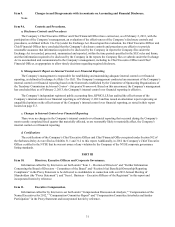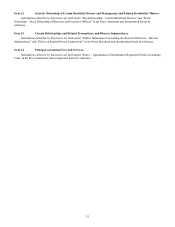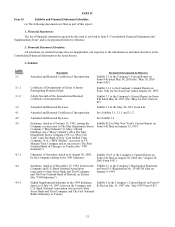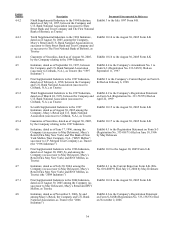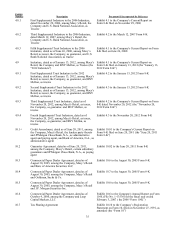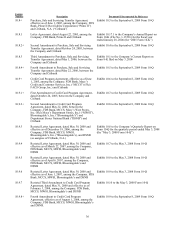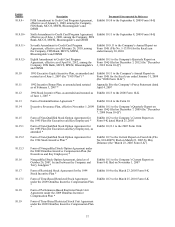Macy's 2012 Annual Report Download - page 33
Download and view the complete annual report
Please find page 33 of the 2012 Macy's annual report below. You can navigate through the pages in the report by either clicking on the pages listed below, or by using the keyword search tool below to find specific information within the annual report.28
Self-Insurance Reserves
The Company, through its insurance subsidiary, is self-insured for workers' compensation and general liability claims up
to certain maximum liability amounts. Although the amounts accrued are actuarially determined by third parties based on
analysis of historical trends of losses, settlements, litigation costs and other factors, the amounts the Company will ultimately
disburse could differ from such accrued amounts.
Pension and Supplementary Retirement Plans
The Company has a funded defined benefit pension plan (the “Pension Plan”) and an unfunded defined benefit
supplementary retirement plan (the “SERP”). The Company accounts for these plans in accordance with ASC Topic 715,
“Compensation - Retirement Benefits.” Under ASC Topic 715, an employer recognizes the funded status of a defined benefit
postretirement plan as an asset or liability on the balance sheet and recognizes changes in that funded status in the year in
which the changes occur through comprehensive income. Additionally, pension expense is recognized on an accrual basis over
employees' approximate service periods. The pension expense calculation is generally independent of funding decisions or
requirements.
In February 2013, the Company announced changes to the Pension Plan and SERP whereby eligible employees will no
longer earn future pension service credits after December 31, 2013, with limited exceptions. All retirement benefits attributable
to service in subsequent periods will be provided through defined contribution plans. As a result of these changes, the
Company recognized reductions in the projected benefit obligations of the Pension Plan of $254 million and the SERP of $42
million as of February 2, 2013.
The Pension Protection Act of 2006 provides the funding requirements for the Pension Plan which are different from the
employer's accounting for the plan as outlined in ASC Topic 715. During 2012, the Company made a funding contribution to
the Pension Plan totaling $150 million. The Company is currently planning to make a pension funding contribution of
approximately $150 million in 2013. Management believes that, with respect to the Company's current operations, cash on
hand and funds from operations, together with available borrowing under its credit facility and other capital resources, will be
sufficient to cover the Company's Pension Plan cash requirements in both the near term and also over the longer term.
At February 2, 2013, the Company had unrecognized actuarial losses of $1,326 million for the Pension Plan and $212
million for the SERP. The unrecognized losses for the Pension Plan and the SERP will be recognized as a component of
pension expense in future years in accordance with ASC Topic 715, and is expected to impact 2013 Pension and SERP expense
by approximately $160 million.
The calculation of pension expense and pension liabilities requires the use of a number of assumptions. Changes in these
assumptions can result in different expense and liability amounts, and future actual experience may differ significantly from
current expectations. The Company believes that the most critical assumptions relate to the long-term rate of return on plan
assets (in the case of the Pension Plan), the discount rate used to determine the present value of projected benefit obligations
and the weighted average rate of increase of future compensation levels.
As of February 2, 2013, the Company lowered the assumed annual long-term rate of return for the Pension Plan's assets
from 8.00% to 7.50% based on expected future returns on the portfolio. The Company develops its expected long-term rate of
return assumption by evaluating input from several professional advisors taking into account the asset allocation of the
portfolio and long-term asset class return expectations, as well as long-term inflation assumptions. Pension expense increases
or decreases as the expected rate of return on the assets of the Pension Plan decreases or increases, respectively. Lowering or
raising the expected long-term rate of return on the Pension Plan's assets by 0.25% would increase or decrease the estimated
2013 pension expense by approximately $8 million.
The Company discounted its future pension obligations using a rate of 4.15% at February 2, 2013, compared to 4.65% at
January 28, 2012. The discount rate used to determine the present value of the Company's Pension Plan and SERP obligations
is based on a yield curve constructed from a portfolio of high quality corporate debt securities with various maturities. Each
year's expected future benefit payments are discounted to their present value at the appropriate yield curve rate, thereby
generating the overall discount rate for Pension Plan and SERP obligations. Pension liability and future pension expense both
increase or decrease as the discount rate is reduced or increased, respectively. Lowering the discount rate by 0.25% (from
4.15% to 3.90%) would increase the projected benefit obligation at February 2, 2013 by approximately $110 million and would
increase estimated 2013 pension expense by approximately $11 million. Increasing the discount rate by 0.25% (from 4.15% to
4.40%) would decrease the projected benefit obligation at February 2, 2013 by approximately $103 million and would decrease
estimated 2013 pension expense by approximately $10 million.


